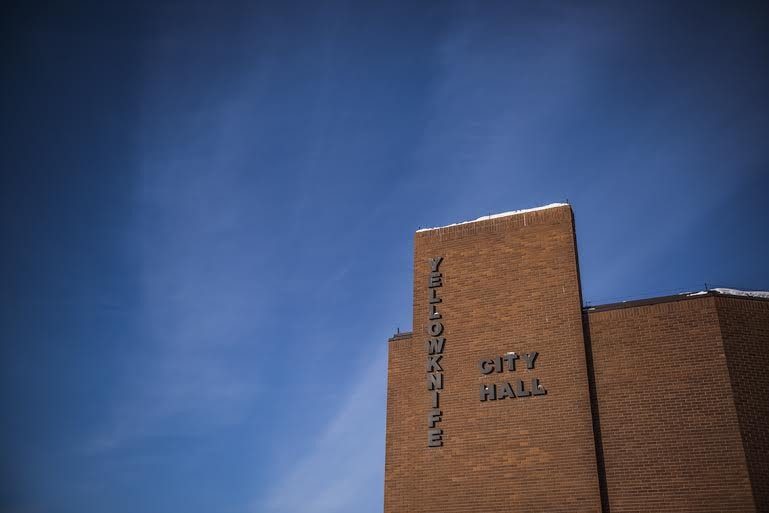On EDGE: Opinion
No matter what, you have to give Premier Bob McLeod his due. The man’s willing to hustle.
There he was in Washington D.C. late last month, representing straight from X1A, pitching the Northwest Territories as the emergency escape hatch for Alberta bitumen, which is finding it harder and harder to get out of Wild Rose country. McLeod scored face time with ExxonMobil, the American Petroleum Institute and other select members of America’s petro-wonk class.
Beyond the fact that both of their hockey teams are currently terrible, Alberta has several much-discussed problems right now. Existing pipelines can’t carry its tar sands crude to market fast enough, and British Columbia isn’t hot to host a pipeline running through its jurisdiction. Phase 4 of the Keystone XL pipeline, which would ship product to the massive oil distribution hub in Cushing, Oklahoma, is hung up by similar political battles in the United States. A potential pipeline to Eastern Canada is on the drawing board, but will likely trigger similar opposition. Producers have been forced to sell crude at a discount to get it to market, although that trend is abating somewhat.
Considering the Mackenzie Gas Project is not going to be built any time soon, McLeod sees an opening for the NWT to assist its southern neighbour with its, um, backup issues.
Essentially, the thinking goes, we’d get the all the jobs and growth of a pipeline, and get to save all that Beaufort natural gas for later. The NWT is already halfway down the rabbit hole anyway; Imperial’s been pumping crude south from Norman Wells via pipeline for decades, and the railhead at Hay River already transports plenty of fuel oil, where it’s moved further north by barge.
In a sit-down with Maclean’s, McLeod hyped a 2013 study by Canatec Associates that reports on the feasibility of moving bitumen to global markets out of Tukoyaktuk (as well as Churchill and Alaska). “What Alberta liked—and we liked—is that if we can get to the Beaufort Sea, then you’ve got three possible markets: You can go up past Alaska and take it to Asia, you can go up through the Russian side of the Arctic and sell it to Europe, or you can take it up through the Northwest Passage and take it to the East Coast.”
To be clear: this is little more than a concept right now. The whole thing hinges on a huge number of ifs, chief among them the fact three other massive pipeline projects—all of which are, you know, designed, and actually in the regulatory system—must fail entirely for a Northern route to even be an option, which means oil and pipeline companies haven’t given the proposal much thought yet. We also still don’t know what the precise route would be, what the GNWT would collect in tolls, or whether the aboriginal governments that supported the MGP would be on board.
But of course, with devolution in place, and billions potentially earmarked for the hydro grid build-out, the Mackenzie Valley highway, fibre optic links, as well as the plethora of nuts-and-bolts infrastructure needs in every NWT community, the GNWT needs cash. The MGP promised 6,000 construction jobs. If the Northern bitumen pipeline offered even a fraction of that, the economic impact would be massive.
Still, it’s curious McLeod presumes that since the Mackenzie Gas Project won federal approval, and because people — in the Inuvialuit region anyway — are on board with a gas pipeline, he can just go ahead and start pitching this to anyone who will listen. There hasn’t been a word spoken about this idea in the Legislature, although Yellowknife Centre MLA Robert Hawkins says to expect the matter to come up when the house resumes next week. Hawkins isn’t necessarily opposed, but he finds it odd that McLeod has been freelancing so aggressively on this file. “This pipeline and Alberta [bitumen] isn’t being welcomed in other areas, so I’m surprised he didn’t talk to MLAs first to raise it as an idea,” Hawkins told me.
You may have noticed that debates over energy can skew to the unreasonable. Plan for more of the same here, from both the yays and the nays. For example, in the Maclean’s interview, McLeod was asked if he’s worried shipping Alberta bitumen through the NWT will increase greenhouse gas emissions. His response: “no, because we would have to go through a regulatory process to identify conditions that we would put on the pipeline.”
If McLeod believes there’s a regulatory system on earth that can prevent oil consumption from emitting greenhouse gasses, then he truly is an optimist. We’ll soon learn if NWT residents share the faith.






